




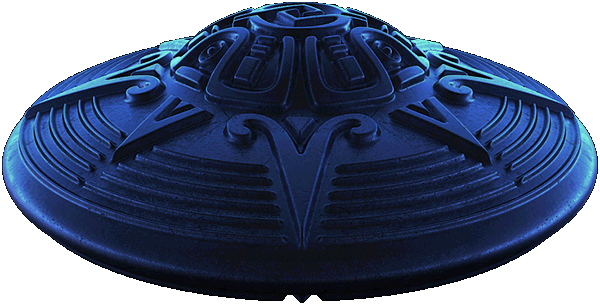

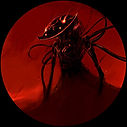
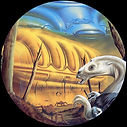

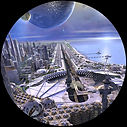

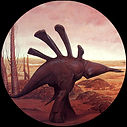



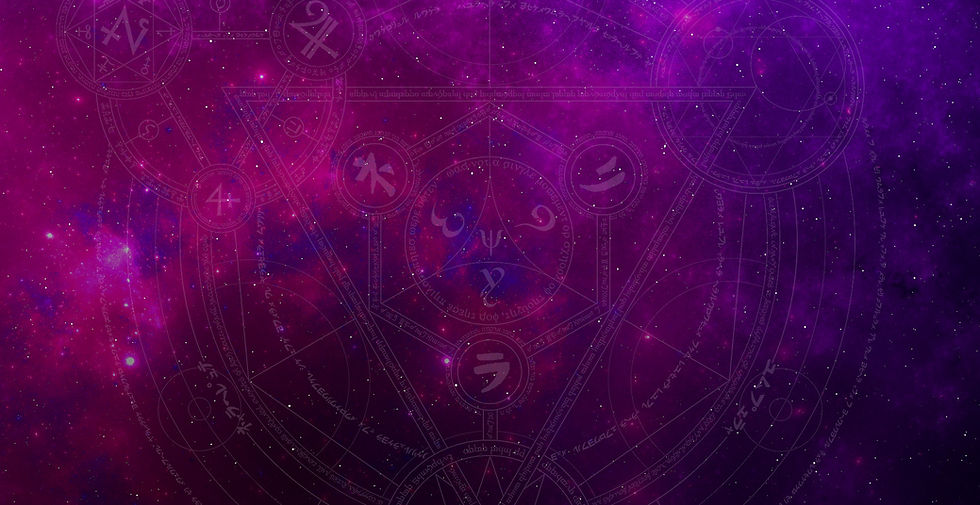
ANCIANT ALIENS - Bizarre Theories and Evidence Throughout History
It’s a persistent theory that not only does extraterrestrial life exist, but also that they may have made contact with humans on Earth in ancient times.
These visitors to our prehistory are generally referred to as ancient aliens or ancient astronauts. Subscribers to this theory cite that their belief stems from evidence in early art and writings suggesting that various cultures may have encountered ancient astronauts.
Conversely, there is a whole body of scientists, historians, and archaeologists who maintain that such ideas have no basis in fact and those things being used as evidence for the ancient astronaut theories have far more plausible and human-based explanations.
Paula Froelich wrote, in a blog for the Huffington Post, of something she saw while in Baghdad’s National Museum of Iraq. In a back room of the museum, she found an image on some pottery of a humanoid figure she dubbed Xorx.
After noting that art at the time wasn’t usually realistic, she goes on to say that people still drew what they knew. She described Xorx this way, “Large bulging eyes? Check. Weird wiggly arms? Check. No hair? Check. More than five fingers? Check. No lips? Check. Weird, elongated body? Check. Therefore, Xorx is an alien.”
According to Historyplex, there are various sites around the world showing drawings that appear to be of alien life forms, such as drawings found in Sego Canyon, Utah, believed to date from 5500 B.C., and Australian representations of Wandjinas, Aboriginal creation spirits that closely resemble our current stereotypes for what an alien looks like.
As fascinating as these images are, however, there’s no actual evidence to suggest that such unusual images are actually inspired by ancient astronauts.
According to National Geographic, there are a number of ancient structures that many believe are proof of ancient astronauts, as well. One of these structures is Teotihuacan, an enormous, ancient city in Mexico. The site is well-known for its pyramidal temples and astronomical alignments, and it has existed more than 2,000 years.
Another example is Stonehenge. The Neolithic stone circle sitting in the middle of the English countryside weighs around 50 tons, and inspired a Swiss author, Erich von Daniken, to suggest it was a model of the solar system, and also functioned as an alien landing pad. How else, after all, could the enormous stones making up Stonehenge have been transported from the quarry where they were cut?
Even renowned physicist Carl Sagan wrote a peer-reviewed paper while at Stanford, that gave an in-depth statistical analysis and explanation for why he believed that not only do aliens exist, but they must have come to Earth at some point in our early history.
The essence of his argument is one of the probabilities. In a Universe that is so large, it is virtually impossible that our one, small, planet could be the only one which as ever generated intelligent life.
Despite Sagan’s work with SETI, in search of extraterrestrial life, he still says, in an interview for NOVA, that to be taken seriously, proof of actual alien visitation would require physical evidence that skeptical scientists could examine in detail, and at leisure, such as the discovery of a ship including isotopes that don’t exist on Earth. Such evidence has yet to be uncovered.
Archaeologists have rebuttals for all of these suppositions, however, except for Sagan’s. Scientists have demonstrated how Stonehenge could have been constructed using only the technologies that were known to be available 5,000 years ago.
https://www.youtube.com/watch?v=ehxxZWVogKs
There is ample documentary evidence that shows that the Egyptian pyramids were constructed by human hands and the same is true for the other sites that ancient astronaut theorists hold up as evidence.
As much as the idea that the planet has already been visited by aliens is an engaging thought, and one that many people support, the simple truth is that there has yet to be any scientific reason to believe that it has happened.


Who Are The Anunnaki? The Real History Of These Sumerian Gods
A group of ancient Mesopotamian gods, the Anunnaki are also sometimes theorized to be a race of prehistoric aliens who came from the planet Nibiru.
Before the Greeks exalted Zeus or the Egyptians praised Osiris, the Sumerians worshipped the Anunnaki.
These ancient gods of Mesopotamia had wings, wore horned caps, and possessed the ability to control all of humanity. Sumerians revered the Anunnaki as heavenly beings who shaped the destiny of their society.
But were they more than deities? Some theorists claim that the Anunnaki were aliens from another planet. Even more shocking, they use ancient Sumerian texts to back up this wild idea. Here’s what we know.
Why The Sumerians Worshipped The Anunnaki
The Sumerians lived in Mesopotamia — present-day Iraq and Iran — between the Tigris and Euphrates rivers from about 4500 to 1750 B.C.
Despite being an ancient civilization, their reign was marked by a number of impressive technological advancements. For example, the Sumerians invented the plow, which played a huge role in helping their empire grow.
Wikimedia CommonsSumerian statues, which depict male and female worshippers. Circa 2800-2400 B.C.
They also developed cuneiform, one of the earliest known systems of writing in human history. In addition, they came up with a method of keeping time — which modern people still use to this day.
But according to the Sumerians, they didn’t do it alone; they owed their historic breakthroughs to a group of gods called the Anunnaki. In their telling, the Anunnaki mostly descended from An, a supreme deity who could control both the fate of human kings and his fellow gods.
Though much remains unknown about the Sumerians and their way of life, they left evidence of their beliefs in ancient texts, including the Epic of Gilgamesh, one of the oldest written stories in human history.
And if one thing is clear, it’s that the Anunnaki gods were highly revered. To worship these deities, ancient Sumerians would create statues of them, dress them in clothing, give them food, and transport them to ceremonies.
Millennia later, some scholars would speculate on what made these Anunnaki so special — and why they were held in such high regard. But it wasn’t until the 20th century that the “ancient alien” theory really took off.
Why Some Think The Anunnaki Were Actually Ancient Aliens
Wikimedia CommonsA Sumerian cylinder seal, which some theorists believe is evidence of ancient aliens visiting the Earth.
Much of what we know about the Sumerian civilization comes from clues that they left behind in thousands of clay tablets. To this day, these tablets are still being researched. But one author claimed that some of the texts hold an incredible revelation — the Anunnaki were actually aliens.
In 1976, a scholar named Zecharia Sitchin wrote a book called The 12th Planet, which shared translations of 14 tablets related to Enki, a child of the Sumerian supreme deity An. His book claimed that the Sumerians believed that the Anunnaki came from a far-off planet called Nibiru.
According to Sitchin, Nibiru has an elongated orbit of 3,600 years. At one point, this planet passed close by Earth. And its people, the Anunnaki, decided to make contact with our world around 500,000 years ago.
But the Anunnaki sought more than just a friendly exchange. They wanted gold, which they desperately needed to repair their planet’s atmosphere. Since the Anunnaki weren’t able to mine gold themselves, they decided to genetically engineer primitive humans to mine gold for them.
And by the time the Sumerians emerged as a civilization, the Anunnaki had given people the ability to write, solve math problems, and plan cities — which led to the future development of life as we know it.
Wikimedia Commons A depiction of the ancient Sumerian god Enki, pictured in the middle.
This may seem like a truly out-of-this-world claim. But Sitchin — who spent decades studying ancient Hebrew, Akkadian, and Sumerian until his death at age 90 in 2010 — once said that skeptics didn’t have to take his word for it.
“This is in the texts; I’m not making it up,” Sitchin told The New York Times. “[The aliens] wanted to create primitive workers from the homo erectus and give him the genes to allow him to think and use tools.”
As it turned out, The 12th Planet — and Sitchin’s other books on this topic — sold millions of copies around the world. At one point, Sitchin even joined forces with Swiss author Erich von Danniken and Russian author Immanuel Velikovsky as a triumvirate of pseudo-historians who believed that the ancient Sumerian texts were not just mythological stories.
Instead, they believed that the texts were more like scientific journals of their time. And if these theorists were hypothetically correct on all counts, this would mean that the Anunnaki were not deities invented by people to explain life — but actual aliens who had landed on Earth to create life.
Humans, in their telling, were made to serve alien masters who needed the Earth’s gold to sustain their civilization. And as chilling as that sounds, millions are apparently willing to entertain this theory — at least for fun.
Controversy Over The “Ancient Aliens” Theory
Wikimedia CommonsAncient figurines that depict Anunnaki figures wearing traditional headpieces.
Most mainstream academics and historians reject the ideas put forth by Sitchin and his colleagues. They often say that these theorists have either mistranslated or misunderstood the ancient Sumerian texts.
One Smithsonian writer outright panned the History Channel show that explores some of these theories, saying: “Ancient Aliens is some of the most noxious sludge in television’s bottomless chum bucket.”
Though some skeptics admit that ancient Sumerian texts may include some unusual-sounding beliefs, they think it’s mostly because they lived in a time before people had a sophisticated understanding of things like floods, astronomy, animals, and other parts of life.
Meanwhile, authors like Sitchin took the Sumerians’ texts literally — and were confident in the translations that they made despite the backlash.
British MuseumClay tablets inscribed with cuneiform.
However, one thing cannot be denied — the people of Sumer were advanced for their time. A clay tablet translated in 2015 shows that ancient astronomers made extremely accurate mathematical calculations for the orbit of Jupiter — a full 1,400 years before Europeans did.
And the Babylonians — who succeeded the Sumerians — may have also created trigonometry 1,000 years before the ancient Greeks.
Although the Sumerian civilization collapsed thousands of years ago, they arguably laid the seeds for humanity to grow and flourish. But did they have help from an otherworldly civilization? Could the ancient Sumerians have had alien visitors who taught them advanced math and science?
Ancient alien theorists would argue yes. They would point to translations like Sitchin’s, the advanced abilities of the people of Sumer, and the fact that some ancient Sumerian texts appear to reference “flying machines” (although this could be a mistranslation).
For now, there is no confirmed evidence that Sitchin’s theories are true. However, no one knows for sure whether or not some of his ideas might’ve been correct. At this point, scholars still have much to learn about the Sumerians. Many of their ancient clay texts are still being translated — and other texts have not even been excavated from the ground yet.
Perhaps most challenging, we also have to recognize that humans today can’t even agree on whether or not aliens exist in our own time. So it’s doubtful that we’ll be able to agree on the existence of ancient aliens anytime soon. Only time will tell if we’ll ever know the real answer.
After learning about the Anunnaki, read about the report that claims aliens likely lived on the Moon billions of years ago. Then, check out the most convincing alien abduction stories in modern history.
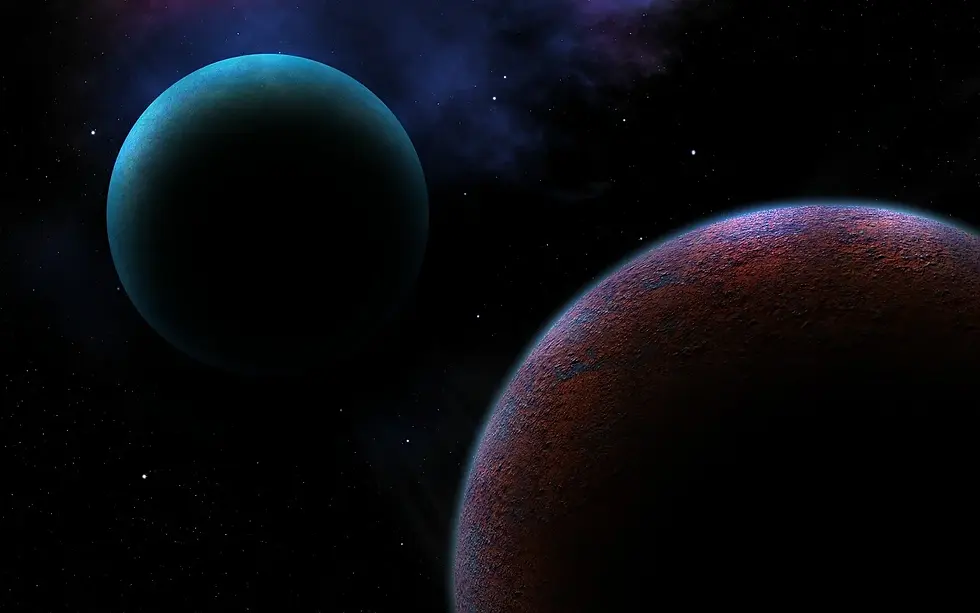
Flying Saucers
The first well-known UFO sighting occurred in 1947, when businessman Kenneth Arnold claimed to see a group of nine high-speed objects near Mount Rainier in Washington while flying his small plane. Arnold estimated the speed of the crescent-shaped objects as several thousand miles per hour and said they moved “like saucers skipping on water.” In the newspaper report that followed, it was mistakenly stated that the objects were saucer-shaped, hence the term flying saucer.
The Roswell UFO Incident
The same year that Arnold saw the flying objects, rancher W.W. “Mac” Brazel came across a mysterious 200-yard long wreckage near an Army airfield in Roswell, New Mexico. Local papers reported it was the remains of a flying saucer. The U.S. military issued a statement saying that it was just a weather balloon, though the newspaper photograph suggested otherwise.
The flames of conspiracy were further fanned in the 1950s, when dummies with latex “skin” and aluminum “bones” that looked eerily like aliens fell from the sky across New Mexico and were hurriedly picked up by military vehicles. To those who believed in the earlier Roswell sightings, this seemed like a government cover-up. For the Air Force, these “dummy drops” were a way to test new ways for pilots to survive falls.
Fifty years later, the military issued a subsequent statement admitting that the Roswell wreckage was part of Project Mogul, a top-secret atomic espionage project.
Did you know? In the Soviet Union, sightings of UFOs were often prompted by tests of secret military rockets.
Project Blue Book
Sightings of unidentified aerial phenomena increased, and in 1948 the U.S. Air Force began an investigation of these reports called Project Sign. Cold War tension was mounting, and the initial opinion of those involved with the project was that the UFOs were most likely sophisticated Soviet aircraft, although some researchers suggested that they might be spacecraft from other worlds, the so-called extraterrestrial hypothesis (ETH).
Within a year, Project Sign was succeeded by Project Grudge, which in 1952 was itself replaced by the longest-lived of the official inquiries into UFOs, Project Blue Book, headquartered at Wright-Patterson Air Force Base in Dayton, Ohio. From 1952 to 1969 Project Blue Book compiled reports of more than 12,000 sightings or events, each of which was ultimately classified as (1) “identified” with a known astronomical, atmospheric or artificial (human-caused) phenomenon or (2) “unidentified.” The latter category, approximately 6 percent of the total, included cases for which there was insufficient information to make an identification with a known phenomenon.
To continue watching video, please disable your ad blocking software and reload the page. For instructions, click here.
The Robertson Panel and the Condon Report
An American obsession with the UFO phenomenon was under way. In the hot summer of 1952, a provocative series of radar and visual sightings occurred near National Airport in Washington, D.C. Although these events were attributed to temperature inversions in the air over the city, not everyone was convinced by this explanation. Meanwhile, the number of UFO reports had climbed to a record high.
This led the Central Intelligence Agency to prompt the U.S. government to establish an expert panel of scientists to investigate the phenomena. The panel was headed by H.P. Robertson, a physicist at the California Institute of Technology in Pasadena, Calif., and included other physicists, an astronomer, and a rocket engineer. The Robertson Panel met for three days in 1953 and interviewed military officers and the head of Project Blue Book. They also reviewed films and photographs of UFOs.
Their conclusions were that (1) 90 percent of the sightings could be easily attributed to astronomical and meteorological phenomena (e.g., bright planets and stars, meteors, auroras, ion clouds) or to such earthly objects as aircraft, balloons, birds and searchlights; (2) there was no obvious security threat; and (3) there was no evidence to support the ETH. Parts of the panel’s report were kept classified until 1979, and this long period of secrecy helped fuel suspicions of a government cover-up.
A second committee was set up in 1966 at the request of the Air Force to review the most interesting material gathered by Project Blue Book. Two years later this committee, which made a detailed study of 59 UFO sightings, released its results as Scientific Study of Unidentified Flying Objects—also known as the Condon Report, named for Edward U. Condon, the physicist who headed the investigation. The Condon Report was reviewed by a special committee of the National Academy of Sciences. A total of 37 scientists wrote chapters or parts of chapters for the report, which covered investigations of the 59 UFO sightings in detail.
Like the Robertson Panel, the committee concluded that there was no evidence of anything other than commonplace phenomena in the reports and that UFOs did not warrant further investigation. This, together with a decline in sighting activity, led to the dismantling of Project Blue Book in 1969.
Area 51
In the 1950s and 60s, multiple UFO sightings were reported around Area 51 in Nevada, a site used variously by the CIA, U.S. Air Force, and Lockheed Martin to test flights of experimental aircraft, or “black aircraft.” Declassified documents show Area 51 was home to a Cold War program called Oxcart dedicated to creating a spy plane that would be undetectable in the air and could be used to gather information behind the Iron Curtain. The resulting SR-71 Blackbird, F-117 Nighthawk, and Archangel-12 (A-12) traveled at speeds upwards of 2,000 miles an hour. These mysterious planes helped fuel rumors that Area 51 was used to conduct experiments on extraterrestrial life and their spacecraft.
Other investigations of UFOs
Despite the failure of the ETH to make headway with the expert committees, a few scientists and engineers, most notably J. Allen Hynek, an astronomer at Northwestern University in Evanston, Ill., who had been involved with projects Sign, Grudge and Blue Book, concluded that a small fraction of the most-reliable UFO reports gave definite indications for the presence of extraterrestrial visitors. Hynek founded the Center for UFO Studies (CUFOS), which continues to investigate the phenomenon.
Aside from Project Blue Book, the only other official and fairly complete records of UFO sightings were kept in Canada, where they were transferred in 1968 from the Canadian Department of National Defense to the Canadian National Research Council. The Canadian records comprised about 750 sightings. Less complete records have been maintained in the United Kingdom, Sweden, Denmark, Australia, and Greece. In the United States, CUFOS and the Mutual UFO Network in Bellvue, Colo., continue to log sightings reported by the public.
In the Soviet Union, sightings of UFOs were often prompted by tests of secret military rockets. In order to obscure the true nature of the tests, the government sometimes encouraged the public’s belief that these rockets might be extraterrestrial craft but eventually decided that the descriptions themselves might give away too much information. UFO sightings in China have been similarly provoked by military activity that is unknown to the public.
Possible explanations for UFO sightings and alien abductions
UFO reports have varied widely in reliability, as judged by the number of witnesses, whether the witnesses were independent of each other, the observing conditions (e.g., fog, haze, type of illumination), and the direction of sighting. Typically, witnesses who take the trouble to report a sighting consider the object to be of extraterrestrial origin or possibly a military craft but certainly under intelligent control. This inference is usually based on what is perceived as formation flying by sets of objects, unnatural—often sudden—motions, the lack of sound, changes in brightness or color, and strange shapes.
That the unaided eye plays tricks is well known. A bright light, such as the planet Venus, often appears to move. Astronomical objects can also be disconcerting to drivers, as they seem to “follow” the car. Visual impressions of distance and speed of UFOs are also highly unreliable because they are based on an assumed size and are often made against a blank sky with no background object (clouds, mountains, etc.) to set a maximum distance. Reflections from windows and eyeglasses produce superimposed views, and complex optical systems, such as camera lenses, can turn point sources of light into apparently saucer-shaped phenomena.
Such optical illusions and the psychological desire to interpret images are known to account for many visual UFO reports, and at least some sightings are known to be hoaxes. Radar sightings, while in certain respects more reliable, fail to discriminate between artificial objects and meteor trails, ionized gas, rain, or thermal discontinuities in the atmosphere.
“Contact events,” such as abductions, are often associated with UFOs because they are ascribed to extraterrestrial visitors. However, the credibility of the ETH as an explanation for abductions is disputed by most psychologists who have investigated this phenomenon. They suggest that a common experience known as “sleep paralysis” may be the culprit, as this causes sleepers to experience a temporary immobility and a belief that they are being watched.
HISTORY.com works with a wide range of writers and editors to create accurate and informative content. All articles are regularly reviewed and updated by the HISTORY.com team. Articles with the “HISTORY.com Editors” byline have been written or edited by the HISTORY.com editors, including Amanda Onion, Missy Sullivan, Matt Mullen and Christian Zapata.
